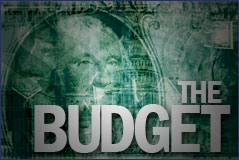Media
How to Limit State Spending

A recent study by Matthew Mitchell of the Mercatus Center suggests that not all spending and taxation limits are created equal. The study examines the effect of certain limitations and their effectiveness on curbing the spending growth of state governments. Currently 27 states have tax-and-expenditure limitations (TELs). Of these limitations, Mitchell found many did little to curb spending.
Here’s a list of the bad, better and best limitations as identified by the study:
Ineffective Spending Limitations:
Pegging budget growth to income growth of residents—Florida has used this method for nearly 20 years and yet the state’s per capita spending grew 30% faster than per capita income. This limitation works better with low-income states, but gives middle- to upper-income states free rein to spend more than they would without the limits.
Better Limitations:
Pegging budget growth to population growth and inflation—Seven states currently use this method, and Mitchell’s research has found that it reduces state budgets on average by 3 percent annually during the length of the TEL
Balanced Budget Requirements—These requirements, which all states but Vermont have, depend greatly on the strength of their enforcement. By not allowing a deficit to be “carried over” from one year to the next, by requiring proposed and enacted budgets to be balanced, and by limiting the amount of debt issued, states can strengthen their balanced budget requirement to limit spending growth.
Best Limitations
Supermajority requirements for tax increases—Twelve states currently require a 2/3 supermajority on all votes raising taxes. This substantially lowers the number of tax increases passed. Coupled with other limitations, supermajority requirements can be a great tool to limit state spending.
“Item-reduction” veto power abilities for the Governor—Allowing the governor to single out and lower a particular line in the budget, rather than simply rejecting an appropriation or the whole bill, plays a major role in state spending. His study find that granting the governor this ability can limit state spending by 14 percent.